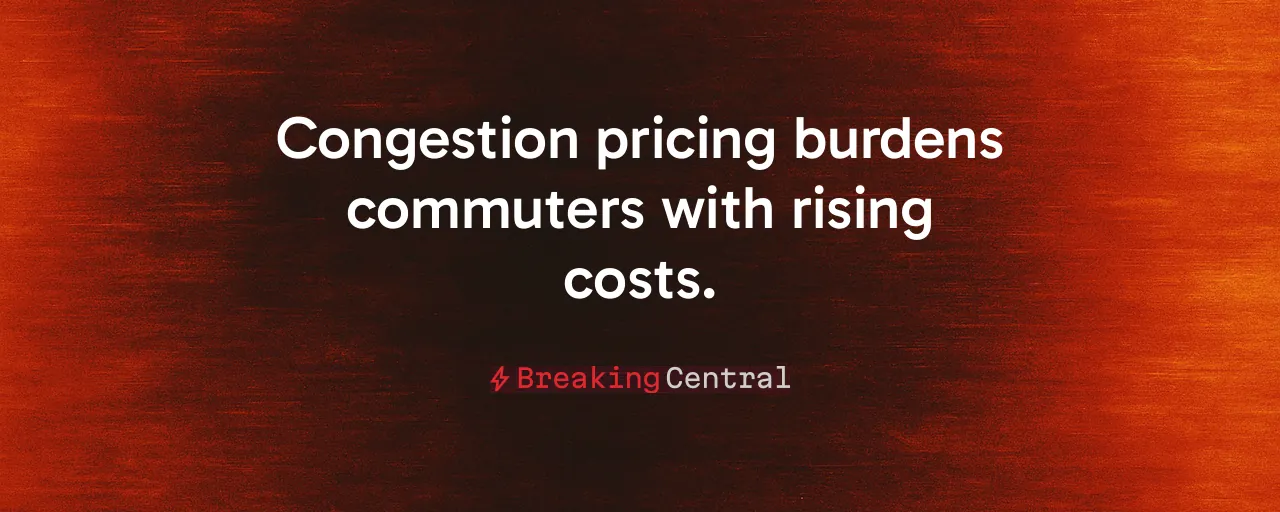A New Toll Hits New York's Streets
New York City's congestion pricing program, launched on January 5, 2025, charges drivers to enter Manhattan below 60th Street. Governor Kathy Hochul and the Metropolitan Transportation Authority hail it as a success, citing reduced traffic and boosted transit funds. Vehicle entries dropped 11 percent, and transit ridership hit post-pandemic highs. Yet, for many New Yorkers, this program feels like a tax piled onto already tight budgets.
The program's revenue, projected at $500 million in 2025, supports $15 billion in transit upgrades. Supporters celebrate faster bus speeds and cleaner air. But the daily reality for commuters, especially from outer boroughs and suburbs, tells a different story. Families and small businesses face new costs, sparking debate over who truly benefits from this bold policy.
The Price of Progress
For working families, the $9 peak-hour toll for passenger cars adds up fast. A daily commuter from Queens or New Jersey could spend over $2,000 a year. Low-income drivers, already stretched thin, face tough choices: pay the toll or switch to crowded trains. The Regional Plan Association notes a 25 percent drop in traffic delays, but for those scraping by, time savings don't offset the financial hit.
Small businesses, especially delivery services and trucking firms, feel the squeeze too. Larger trucks pay higher fees, while interstate haulers contend with overlapping charges from city congestion tolls and existing regional bridge tolls. The Manhattan Institute points out that these costs could ripple, raising prices for goods and services citywide. While Broadway boasts record ticket sales, not all businesses share the prosperity.
Questioning the MTA's Track Record
The promise of congestion pricing hinges on the MTA's ability to deliver. Revenue funds new subway cars, signal upgrades, and station accessibility. Yet, skepticism abounds. The MTA's history of cost overruns and delayed projects raises doubts about whether riders will see real improvements. Analysts like the Manhattan Institute cite long-standing MTA concerns about cost overruns and delayed projects, raising doubts about whether congestion pricing funds will deliver promised improvements.
Transit ridership is up: subways by 7 percent, buses by 12 percent, but critics argue these gains reflect post-pandemic recovery, not pricing alone. Bus speeds improved 3.2 percent in the zone, but some routes still lag. Commuters want accountability, not just promises of future upgrades.
A Regressive Burden on Commuters
Critics, including federal officials under President Trump, argue the toll lacks fairness. Legal filings from the U.S. Department of Transportation claim drivers have no toll-free route, violating federal law. New Jersey leaders warn of spillover congestion clogging suburban roads. For commuters from Long Island or the Hudson Valley, the toll feels like a penalty for needing to work in Manhattan.
Historical attempts at congestion pricing, like those in 1977 and 2008, failed due to public outcry over equity. Today's program offers exemptions for emergency vehicles and some disabled drivers, but many essential workers, including delivery drivers and tradespeople, get no relief. The policy risks hitting hardest those least able to afford it.
Solutions Rooted in Fairness
A better approach would ease the burden on everyday New Yorkers. Expanding exemptions for low-income drivers and small businesses could protect vulnerable groups. Overnight discounts for truckers might reduce costs without undermining revenue. New Jersey's call for joint oversight to monitor spillover traffic deserves attention, ensuring suburban communities aren't left in the lurch.
Instead of leaning on tolls, the state could explore dynamic traffic signal timing or road capacity upgrades. Independent audits of MTA spending would build trust, ensuring funds deliver tangible results. These steps prioritize working families while addressing congestion and transit needs.
Balancing Growth and Responsibility
Congestion pricing has cut crashes by 14 percent and air pollution, with noise complaints down 45 percent. These gains matter. But policies must serve all New Yorkers, not just those riding new subway cars. The program's revenue strengthens MTA bonds, yet businesses face higher logistics costs. The challenge is ensuring growth doesn't come at the expense of fairness.
The economy shows resilience: 4.86 million jobs in April 2025, up 1.6 percent from last year. But commuters saving 21 minutes daily still feel the toll's sting. A balanced approach would refine pricing, widen relief, and hold the MTA accountable for results.
A Path for New York's Future
New York's congestion pricing experiment is a bold step, but its success depends on execution. Working families and small businesses need relief from mounting costs. Thoughtful exemptions, transparent spending, and alternative traffic solutions can align the program with the needs of all New Yorkers, not just the MTA's bottom line.
The state's resilience shines through legal battles and economic growth. Yet, leadership must listen to commuters and businesses bearing the toll's weight. By prioritizing fairness and accountability, New York can tackle congestion without leaving its hardworking residents behind.
As the program evolves, the focus needs to stay on delivering value: faster commutes, cleaner air, reliable transit, while ensuring no one is priced out of opportunity. New Yorkers deserve a system that works for everyone, built on trust and shared progress.
